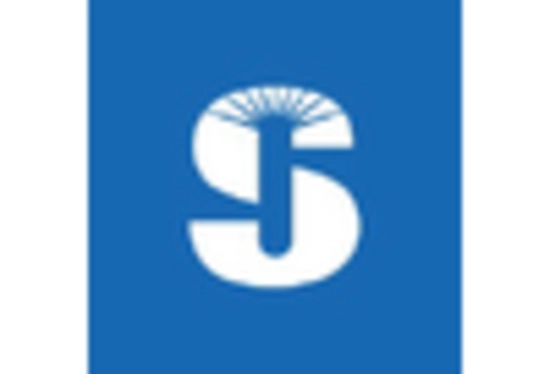Technological Innovations
Technological innovations play a crucial role in shaping the Continuous Glucose Monitoring System Market. Recent advancements in sensor technology, data analytics, and mobile applications have enhanced the functionality and user experience of glucose monitoring systems. For instance, the introduction of smart sensors that provide real-time glucose readings and integrate seamlessly with smartphones has revolutionized diabetes management. The market is witnessing a surge in demand for devices that offer improved accuracy, longer wear times, and user-friendly interfaces. As manufacturers continue to invest in research and development, the potential for new features, such as predictive analytics and integration with other health monitoring devices, is likely to drive market growth. This ongoing evolution in technology suggests a promising future for continuous glucose monitoring systems.
Rising Prevalence of Diabetes
The increasing prevalence of diabetes worldwide is a primary driver for the Continuous Glucose Monitoring System Market. According to recent data, the number of individuals diagnosed with diabetes is projected to reach approximately 700 million by 2045. This alarming trend necessitates effective management solutions, thereby propelling the demand for continuous glucose monitoring systems. These systems provide real-time data, enabling patients to maintain optimal glucose levels and reduce the risk of complications. As healthcare systems strive to improve patient outcomes, the adoption of continuous glucose monitoring technology is likely to accelerate, further expanding the market. The integration of these systems into diabetes management protocols appears to be a pivotal factor in addressing the growing healthcare burden associated with diabetes.
Growing Awareness of Preventive Healthcare
The growing awareness of preventive healthcare is significantly influencing the Continuous Glucose Monitoring System Market. As individuals become more health-conscious, there is an increasing emphasis on proactive management of chronic conditions, including diabetes. Continuous glucose monitoring systems empower users to take charge of their health by providing insights into their glucose levels and dietary impacts. This shift towards preventive measures is supported by healthcare providers who advocate for early intervention strategies to mitigate the risks associated with diabetes. The market is expected to benefit from this trend, as more patients seek out continuous monitoring solutions to prevent complications and improve their quality of life. The emphasis on preventive healthcare is likely to sustain the demand for these innovative monitoring systems.
Increasing Demand for Personalized Medicine
The increasing demand for personalized medicine is emerging as a significant driver for the Continuous Glucose Monitoring System Market. Patients are increasingly seeking tailored healthcare solutions that cater to their unique needs and preferences. Continuous glucose monitoring systems offer personalized insights into glucose patterns, enabling users to make informed decisions about their diet, exercise, and medication. This trend aligns with the broader movement towards individualized treatment plans in healthcare. As more healthcare providers adopt personalized approaches to diabetes management, the demand for continuous glucose monitoring systems is expected to rise. The ability to customize treatment based on real-time data positions these systems as essential tools in the evolving landscape of personalized medicine.
Regulatory Support and Reimbursement Policies
Regulatory support and favorable reimbursement policies are vital drivers for the Continuous Glucose Monitoring System Market. Governments and health organizations are increasingly recognizing the importance of continuous glucose monitoring in diabetes management. As a result, there has been a push for policies that facilitate access to these technologies. In many regions, reimbursement for continuous glucose monitoring devices has improved, making them more accessible to patients. This financial support encourages adoption among individuals who may have previously been deterred by costs. Furthermore, regulatory bodies are streamlining approval processes for new devices, fostering innovation and competition within the market. The combination of supportive regulations and reimbursement frameworks is likely to enhance the growth trajectory of the continuous glucose monitoring systems.


















Leave a Comment